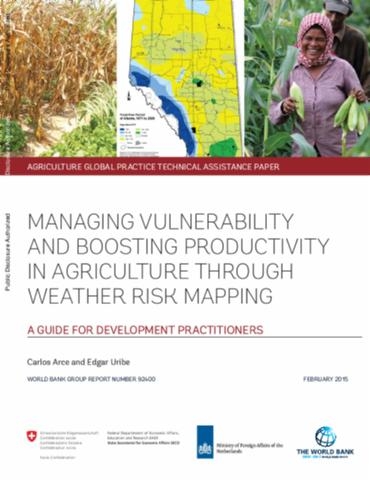Managing Vulnerability and Boosting Productivity in Agriculture through Weather Risk Mapping
Productivity in the agricultural sector is inherently dependent on weather, such as variations in rainfall and temperature. As a result, weather risk events can cause losses in yield and production that translate into economic losses for producers, as well as other sector stakeholders that depend on income from agricultural trade, transport, processing, or export. Extreme temperatures, floods, droughts, hailstorm, and windstorms are just a few examples of weather risk events that cause major economic losses. In developing countries, weather risk is especially significant due to the importance of the agricultural sector in the overall economy and its contribution to household food security. Up to 90 percent of the population in many developing countries relies on agriculture for a living, since the sector is the primary source of income, employment, and food. Absent effective risk management strategies, weather shocks to agriculture in these countries have far-reaching effects on wellbeing, development, and poverty reduction.
Developing countries also tend to be more vulnerable to weather risks owing to factors that constrain stakeholders’ abilities to manage risk. Since households and companies involved in agriculture typically operate with a low level of assets and lack access to well-developed insurance and credit markets, their risk management strategies are limited compared with stakeholders in developed countries. An additional constraint is that weather risk occurrence tends to affect households and businesses in the same community, minimizing the effectiveness of traditional coping mechanisms, such as loans or gifts from family members, on which rural communities rely.
At the same time, the predicted impacts of climate change have only increased the importance of effectively managing weather risk. As a result of global warming, extreme weather events are expected to become more frequent and more intense.
In many countries, weather variability has already increased, making it more difficult for producers to predict and respond to weather patterns.














